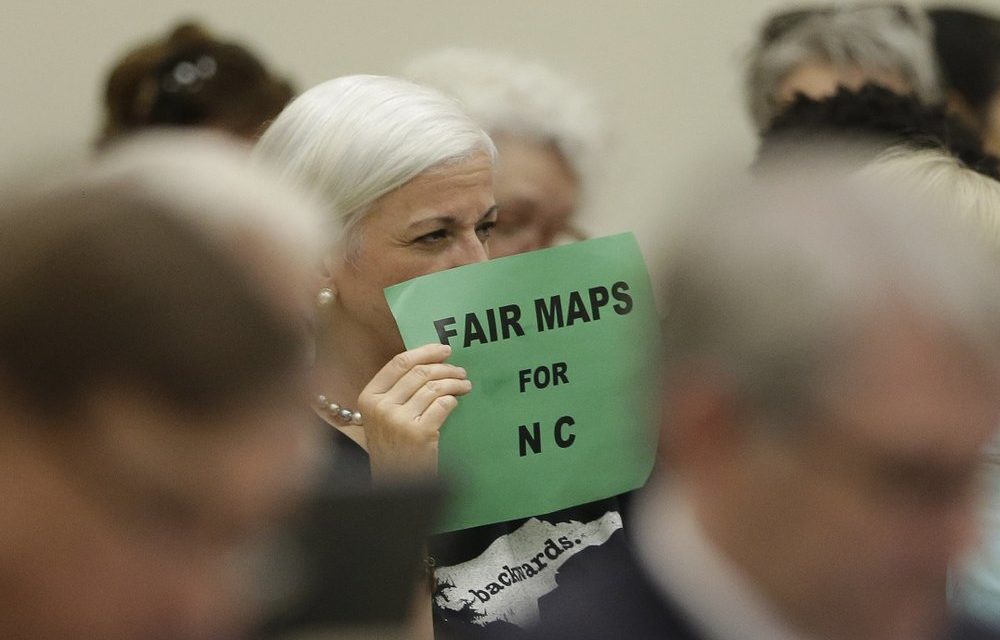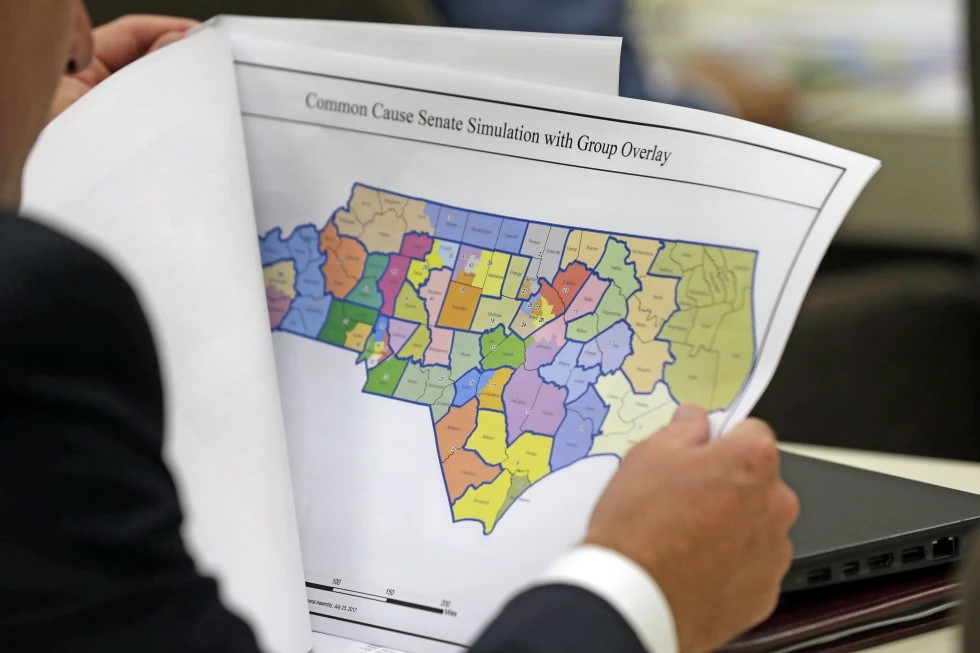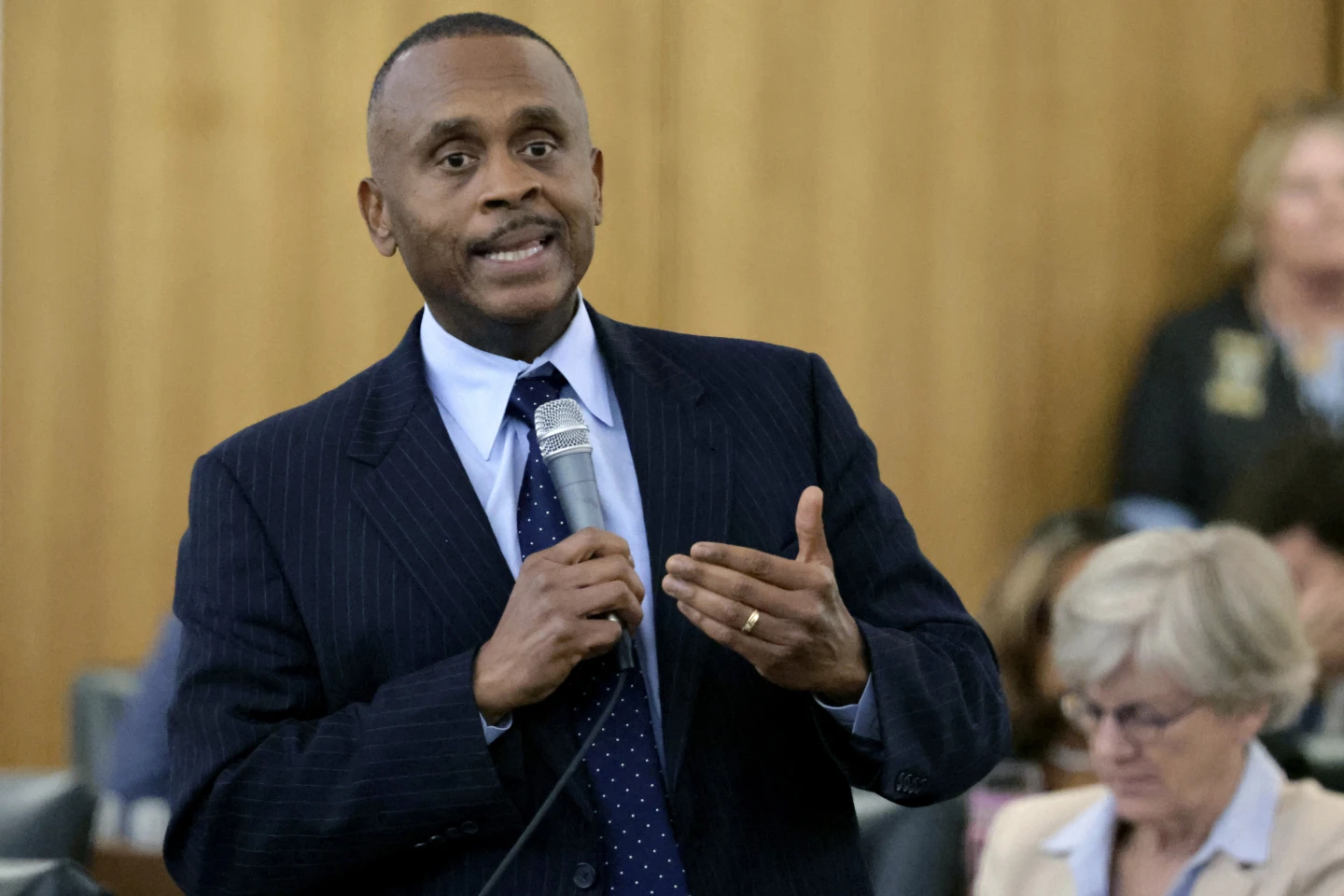Republican victories in state legislative and gubernatorial elections in 2010 put them in a commanding position the next year to draw new voting districts for the U.S. House and state legislatures that helped fortify Republican power for much of the following decade.
But the celebration was short-lived for at least one of the Republicans’ top redistricting strategists.
Behind the scenes, GOP consultant Thomas Hofeller was worried that Democrats were far ahead of Republicans in collecting data that could help them draw districts in their favor following the next round of redistricting that will occur after the 2020 census.
Stephanie Hofeller did not respond to a request for comment sent through her lawyer.
The records reviewed by The Associated Press reveal Hofeller’s extensive involvement in drafting or defending Republican redistricting efforts against claims of racial or political gerrymandering. He worked not only for statewide efforts, such as in Missouri and Virginia, but even for local ones, such as in Galveston County, Texas, and Nassau County, New York. Hofeller also aided GOP legal challenges to Democratic-friendly maps in Arizona and Maryland.
Before the 2010 elections, the records reveal that Hofeller also strategized with Republicans about backing a successful California ballot initiative entrusting an independent commission — instead of the Democratic-led Legislature — with the task of congressional redistricting. A draft of one memo said it could help “avoid a GOP disaster” in the 2011 redistricting. More recently, Democrats have been backing successful ballot initiatives for independent commissions or nonpartisan redistricting efforts against the resistance of Republican-led legislatures in states such as Michigan and Missouri.
The Hofeller records also reveal the degree to which the once-a-decade task of redistricting has turned into a permanent, multi-million-dollar operation for political parties that are angling for every possible advantage to grasp or strengthen power.
Amid ongoing legal battles stemming from the 2011 redistricting, records show Hofeller already was turning his attention to the redistricting that will occur in 2021.
A July 2013 redistricting report to the Republican National Committee, stored in Hofeller’s electronic files, warned that Democrats “have out-gunned the GOP in data preparation, community involvement and engagement in the redistricting process as well as committing legal resources.”
“The GOP has been fortunate to have control of state government resources to fend off challenges to its plans in some key states to adequately offset some of these advantages,” the memo stated.
Hofeller was one of several Republicans who believed the party needed to do more for the next round of redistricting.
Specifically, he wanted Republicans to establish a permanent redistricting entity . Its task would be to compile a decade’s worth of precinct-level election results from around the country that could be matched with 2020 census data to give mapmakers a granular history of which neighborhoods were most likely to vote for Republicans or Democrats.
He noted that Democrats already had such a database in the hands of the National Committee for an Effective Congress, an entity founded by former first lady Eleanor Roosevelt and her friends in 1948.
Instead of maintaining an ongoing effort, Republicans had a history of procrastinating — pulling together a redistricting office at the end of a decade and scrambling to compile data. Hofeller’s records show a contractor hired by Republicans to build an election-results database for use with the 2010 census figures didn’t start work until November 2010, was focused on only a limited number of states and needed more money by the following February.
In November 2013, Hofeller emailed a couple dozen key GOP officials and consultants with an attached memo outlining a proposal for a permanent Republican data office focused on redistricting and spreadsheets detailing its potential cost. Hofeller suggested an annual budget of more than $1.4 million and a 16-person staff .
But his plan wasn’t implemented. Two years later, Hofeller still was circulating a similar proposal among some Republicans.
In 2017, Republicans finally established a permanent redistricting operation. The National Republican Redistricting Trust has a broader role and a budget about 10 times larger than what Hofeller proposed, said the trust’s executive director, Adam Kincaid, who was one of the recipients of Hofeller’s 2013 proposal. The trust is focused not only on building an election-results database that state officials can use in redistricting but also on funding legal fights over maps and generating public awareness about redistricting.
“The Democrats’ data on redistricting has always been ahead of where the Republicans’ data has been on redistricting,” said Kincaid, who was the redistricting coordinator for the National Republican Congressional Committee in 2011 and 2012.
Part of the task of the National Republican Redistricting Trust “is helping the Republican Party catch up and eventually surpass what the Democrats have been doing for over a generation now.”
The National Committee for an Effective Congress ramped up its use of precinct-level data for Democratic redistricting efforts following the 2000 and 2010 censuses, said Mark Gersh, a Democratic strategist who has worked with the committee since 1976.
Yet Gersh said having vast data resources only helps if a political party has the power to make use of them. For example, the Democrats’ data did little after the 2010 elections in states such as Michigan and Ohio. The tea party wave helped Republicans win control of the state legislature and governor’s offices, which then drew new boundaries for legislative and congressional districts.
“(Data) probably helped us marginally, but let’s face it: Winning elections for the state legislature or having fair commissions do this is the best way of guaranteeing your success,” Gersh said.
Photo courtesy of AP/Gerry Broome, File









